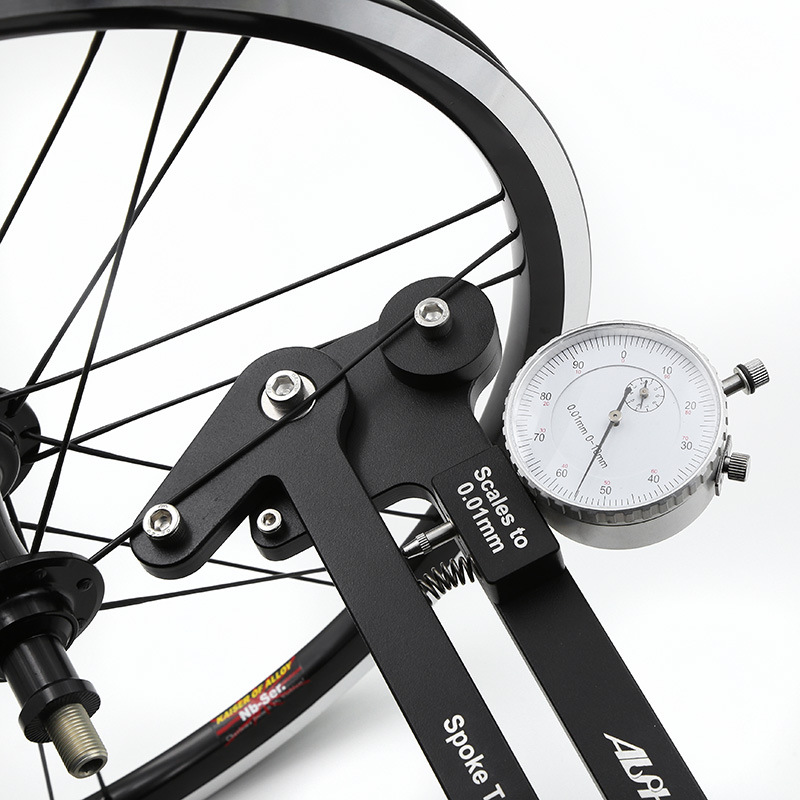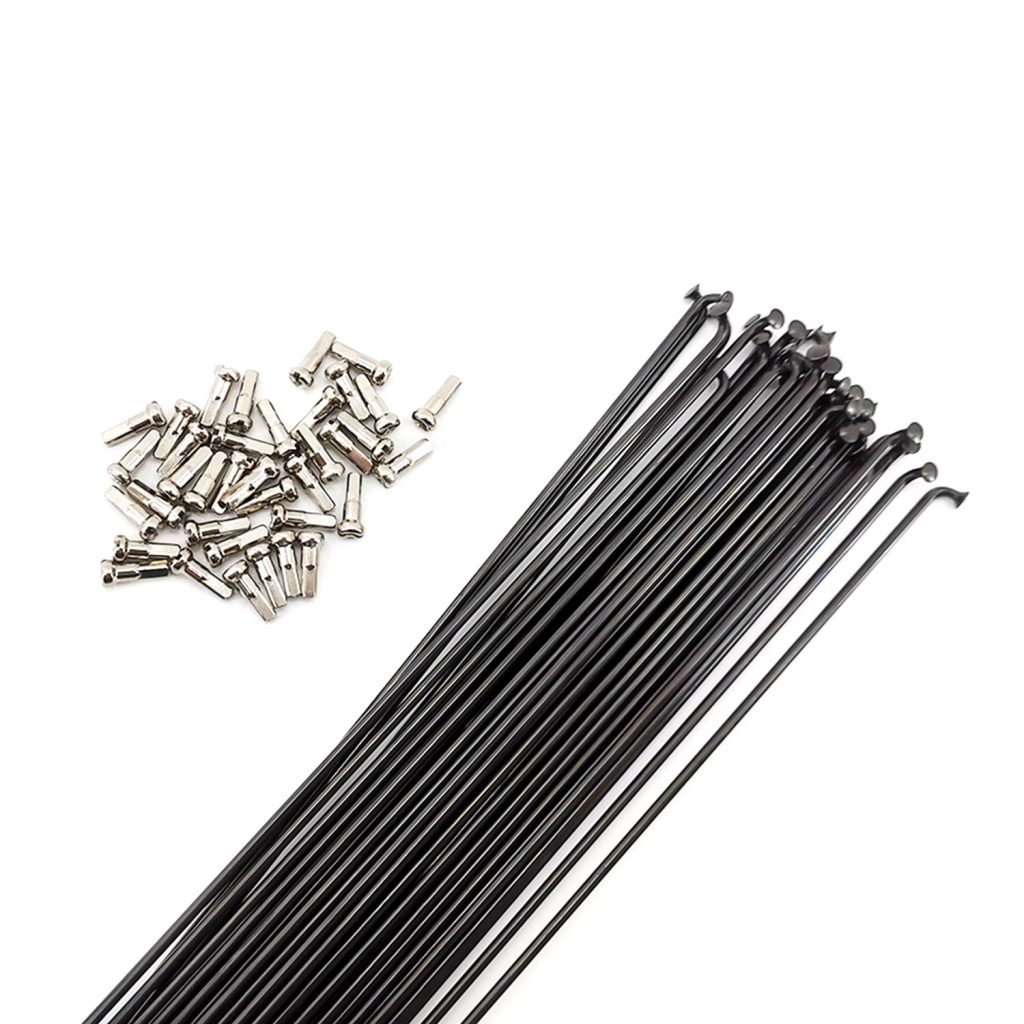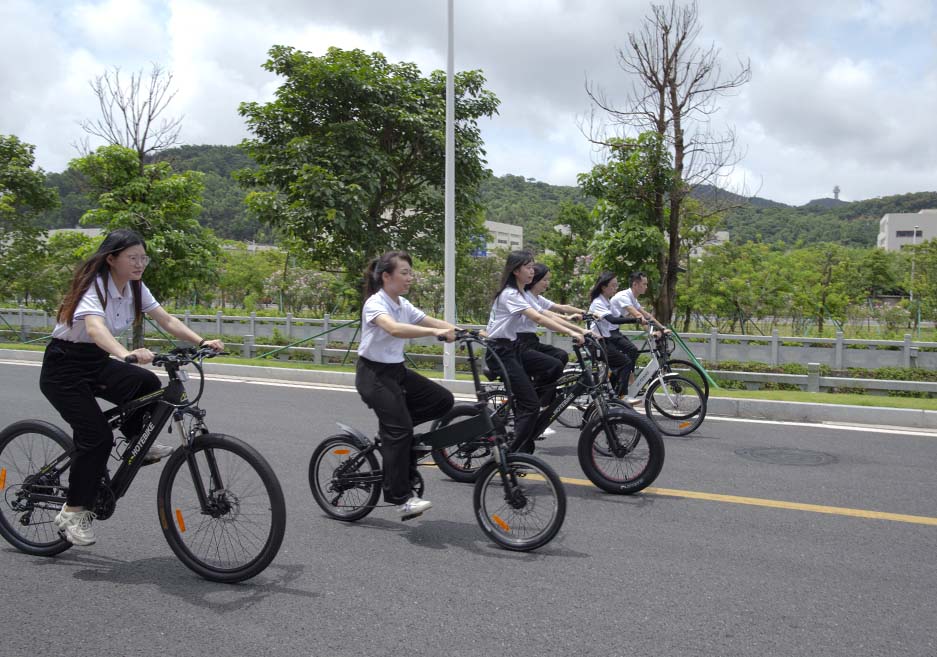Your bike’s spokes are key components of your wheel, being thin metal rods or wires that radiate out from the central hub (which rotates around the axle) to the outer rim (onto which the tyre is attached). The reasons for the damage of the electric bike spokes, the methods to reduce the damage and how to choose the appropriate and sturdy spokes, please read the purchase guide of the spokes in this chapter, we will let you know all the content!

Spokes are typically threaded through holes in the hub flange and attached the rim via little brass nipples which screw onto threads in the end of the spoke. The spokes are attached to the rim under tension, with this tension adjusted by screwing or unscrewing the nipples. When properly adjusted the wheel will spin ‘true’ and can bear the loads during riding and pedaling, without changing shape.
Why Your Bike Spokes Keep Breaking? How To Stop It? It is not uncommon and riders say it will happen eventually so it’s best to know the drill. Spokes are no joke (forgive me for that one) as they maintain the entire wheel and also keep you in a straight line and moving forward.
Why do bicycle spokes break
You’re riding too hard. – If you’re that rider that’s fearlessly hitting every curb at maximum force and coming off the curbs even harder, you’ll need a bike that’s made for that. If yours keeps squashing like spaghetti, it may be the wrong design for you. Later in this article, I will give affordable recommendations that may suit your needs.
The wheel is badly constructed. – Often designers will cut corners and the price will reflect that if your spokes seem to bend at every jolt. I’ll lead early in this article by saying that if you’ve broken more than 4 spokes this month (which is happening to many riders right now) invest in better wheels. Don’t try to fix them spoke by spoke which many do as well. At a certain point, the wheel will be too far gone to mend and repurchase will be in order.
You’re too heavy for that bike. – No shame in your game, many of the people popping spokes are 6’7″football players weighing 250lbs or more. If this is the case for you, you probably have wheels with too few spokes. Invest in higher quality and higher spoke-quantity. This could ultimately fix everything for you.
Is it the right side? – If you notice the damage keeps coming from one side in particular – it could be the right side popping against your chain drop and the cassette. In this case, you’ll need drive-side spokes to prevent this from giving you future trouble. The free tip here: change all of your right-side spokes at once so you don’t have to go back one at a time. It will save you a headache and you’ll thank me later.
It’s just a cheap bike. – If you’re riding in the city hitting curbs on a mountain bike with fewer spokes than you need, you’ll be repairing spokes far more often. But you’re here reading this article, so you get points for trying to educate yourself. If the spokes are breaking too frequently, invest in a top-rated wheel to avoid the headache.
Climate Could Be Breaking Your Spokes
A funny culprit of your common spoke breaks maybe your hometown.
If you’re living in a place with high saltwater content in the air, humidity, or frequent rain showers – it will affect your bike. Be sure that you store your bicycle in a dry place away from the elements as rust will ensure and spokes will start breaking before their time.
Be certain that your spokes are stainless steel as this will be helpful to your climate. It’s not completely immune to the water but certainly more immune than other materials.
Prevent your bike from corroding and store with thought. It shouldn’t be an issue as long as you bring your bike inside with your, in a garage, or perhaps in a water-resistant shed.
How to tighten spokes
Spokes will fatigue at some point as all metals do. You can repair them up to a few times, especially if you’ve already invested in a quality wheel that you know has some life left in it. Don’t throw it out, just know how to maintain them.
Check your wheels on a regular basis and adapt them to your road-type and terrain.

This is not difficult and the technique is similar to playing the guitar. String it like you’re playing a note and notice if each sound relatively similar. You’ll hear the note flatten and sound off-pitch compared to the others if it’s loose. This is the spoke that needs to be tightened.
Don’t overtighten your wheel spokes either as this could cause more spokes breaking. You’ll feel the perfect friction that should sound melodic and in tune with the other spokes’ pitch.
How to choose the right electric bike spokes
Different types of spokes are available for different wheel types and riding disciplines, so if you need to replace a broken spoke – or are building a wheel from scratch – you’ ll need to know which type you require.
In general terms, the more spokes a wheel has, the more the load is spread and the stronger the wheel should be. Conversely, less spokes means a lighter wheel, so a wheelbuilder must strike a balance between desired strength and light weight.
Standard wheels are built using j-spokes, with a bend in one end where the spoke fits into the rim of the wheel’s hub, although some manufacturers offer wheels with straight-pull spokes set into specially-designed hubs – these have no bend.
Spokes can be plain-gauge, meaning they are the same thickness for their entire length; butted (which are thinner in the middle) or aero in profile.
The correct spoke for your wheel will largely depend on two things – sizing and intended riding type.
Intended riding type: Good quality general purpose spokes can be use to build wheels for practically any discipline, as it’s the number and pattern of spokes that determines wheels strength more so than spoke type (see below for more about spoke lacing). However some types of thin, lightweight spoke designed for fast, lightweight wheelsets are not advisable for heavy-duty wheel builds, while straight-pull spokes and hubs are not compatible with ‘standard’ j-bend spokes.
Sizing: Spokes come in a variety of lengths to suit the vast range of wheel sizes on the market, from 20” BMX wheels right up to 29” MTB hoops. However there is not a standard range of sizes, as the dimensions of the hub and rim also come into play – the length of spoke required is not the radius of the wheel, but rather the distance from the hub’s flange holes to the spoke holes on the rim. Add in deep-section rims and wide-flange hubs and you can see why it’s complicated. See below for more on the different types of spokes and their intended applications.
Common types of spoke
Straight-gauge spokes: These are the same width for their entire length (typically 2mm or 14-gauge). Simple and inexpensive, plain-gauge spokes are often used to build wheels where weight-saving is not an issue, such as heavy-duty BMX, MTB or touring bike hoops. They offer a slightly stiffer ride because of their thicker cross—section.
Samll Tips: How many spokes on a bike wheel: 12G,13G,14G spokes
The g refers to guage. It is an imperial measure of thickness of round things. And the smaller the number the bigger the diameter.
The “regular” spokes are 14g, then there are spokes that are thicker (13g) and Fat Spokes that are 12g.
Single-butted spokes: These spokes are slightly thicker in the neck of the spoke (the part closest to the hub) for extra strength and stiffness when building disc-brake wheels, and for heavier applications. They are slightly heavier than double-butted or plain-gauge spokes.
Double-butted spokes: These are lightweight spokes that are thinner in the middle (e.g going from 2mm to 1.8mm and back to 2mm again) to save weight and reduce ride stiffness, without compromising on wheel strength. Double-butted spokes are lighter and more expensive than plain-gauge or single-butted spokes, and in their thinnest guises (e.g down to 1.5mm) may not be suitable for MTB riding.
Aero bladed spokes: These have a flattened cross-section to reduce wind resistance. For time-trial bikes and race-oriented road bikes.
Straight-pull spokes: These have no ‘j-bend’ at the flared (hub) end, the idea being that eliminated the bend cuts out a potential weak point in the wheel build, and also saves weight through the spoke being fractionally shorter (which adds up in a wheel with 20 or so spokes). They require a dedicated hub.
How many spokes on a bike wheel
Wheels can be laced using different numbers of spokes to influence their strength and weight. The more spokes used, the more the load is spread and the stronger the wheel should be.
However less spokes means a lighter wheel, so manufacturers of performance wheels especially have worked hard to develop spoke designs and spoke patterns that cut down on the number of spokes required, without compromising strength or lateral stiffness – the evolution of stiff, deep-section aero rims for road biking having played a big part in this.
BMX wheels, for example, will typically use 36 spokes. For MTB trail riding 32 spokes has become the accepted standard, with more lightweight race wheels featuring 28- or 24-hole drilling. More extreme riding styles call for more strength so 36 spokes are common in AM, Enduro, DH and FR wheelsets, while the most demanding jump and street riders may opt for anything up to 48 spokes in order to handle the impacts dished out by tarmac and concrete.
For road bikes, where strength is not such an issue, the standard number of spokes is 24. Most performance road wheelsets are however now radially laced. Wheels of this type are typically built with deep-section rims using less spokes – 18 or less on the front wheel and 20 on the rear (to handle the extra forces generated by pedalling).
Ebikes with quality spokes
Hotebike 26-inch to 29-inch mountain bikes and city bikes choose 13G for the front wheel spokes and 12G for the rear wheel spokes. Each wheel contains 36 high-quality stainless steel spokes. If you are interested in our electric bikes, kits or spokes, please feel free to contact us.
Wish you all the best!
LEAVE US A MESSAGE
 hotebike
hotebike

